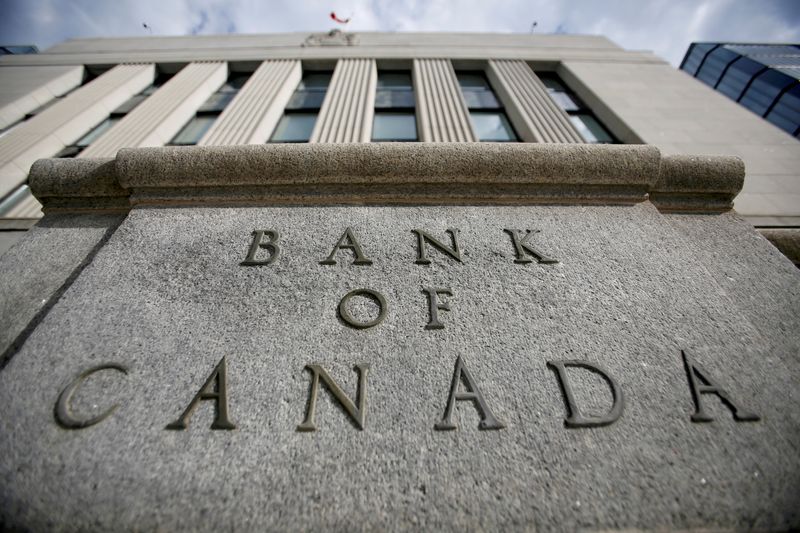Exclusive-Bank of Canada to keep inflation target, shun big strategy shift -source
© Reuters. FILE PHOTO: A sign is pictured outside the Bank of Canada building in Ottawa, Ontario, Canada, May 23, 2017. REUTERS/Chris Wattie/File Photo By Steve Scherer
OTTAWA (Reuters) – The Bank of Canada will leave its inflation target at 2% in a framework renewal, shunning a major shift in monetary policy strategy similar to the one adopted by the U.S. Federal Reserve last year, a source familiar with the process said on Thursday.
The central bank and the finance ministry review the inflation target, which expires at year-end, every five years. It has been set at the 2% midpoint of a 1%-3% control range for the last 30 years.
For the first time since 1995, the central bank reviewed not only the target but also four alternative frameworks, including average inflation targeting, which the U.S. Federal Reserve began using last year, and a dual mandate targeting maximum employment, which the Fed also uses.
Canada is sticking with its current inflation targeting mechanism, said the source, adding that the policy would soon be outlined officially.
“The upcoming announcement will be a very clear reaffirmation of the centrality of the inflation target,” said the source, who was not authorized to speak on the record.
“But it’s not a photocopy of last time. There’s a little bit of updating to reflect what the bank is already doing – some updating of the language to reflect the consideration the bank is already giving to employment factors.”
The renewal of the framework comes at a time when central banks around the world are grappling with how to manage an uneven rebound from the COVID-19 pandemic.
Canada’s inflation rate matched an 18-year high of 4.7% in October, the seventh consecutive month above the 1%-3% control range. The central bank has taken a flexible approach, allowing jobs and the economy to rebound while supply chain bottlenecks and rising energy prices pushed up overall costs.
“The run-up in inflation over the past year sort of reinforced that view that this was probably not the time to be tinkering with the inflation targeting regime,” said Doug Porter, chief economist at BMO Capital Markets.
The source said inflation and affordability were “real concerns,” adding: “Ensuring that the bank continues to be able to tackle these issues is first and foremost the goal.”
In May, Bank of Canada Governor Tiff Macklem said he was concerned about the uneven impact of the pandemic on employment. By November it was well above pre-COVID levels, but he indicated slack in the economy had not been fully absorbed.
“If all they are saying is that they’ll consider labor market conditions as input into their inflation views, then markets are likely to keep calm and walk on,” said Derek Holt, vice president of capital markets economics at Scotiabank.
The Canadian dollar was little changed on the news of the framework renewal, having already weakened to about 1.2700 per greenback, or 78.74 U.S. cents, down 0.4% on the day, as investors cut back some risk ahead of U.S. inflation data.
On Wednesday, the bank held its key overnight interest rate unchanged, as expected, and said inflation was broadening, though the Omicron coronavirus variant had created “renewed uncertainty.”
Earlier on Thursday deputy governor Toni Gravelle said the bank was concerned the factors fueling price increases could last longer than expected, leading to more persistent inflation.
The Bank of Canada and the finance ministry declined to comment.











 Bitcoin
Bitcoin  Ethereum
Ethereum  Tether
Tether  XRP
XRP  Wrapped SOL
Wrapped SOL  USDC
USDC  TRON
TRON  Lido Staked Ether
Lido Staked Ether  Dogecoin
Dogecoin